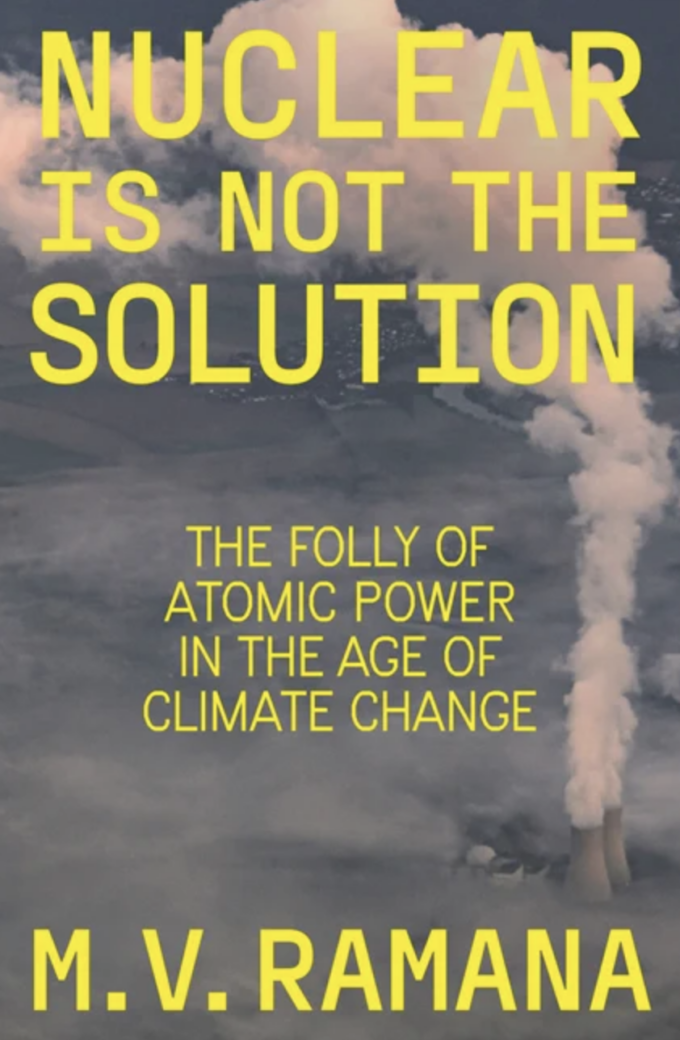Zionism: Managing Its Demise
 It is increasingly becoming clear–even to some Western observers—that the Zionist project has run its course. It had an extraordinary run, but it has now reached the end of its settler-colonial track.
It is increasingly becoming clear–even to some Western observers—that the Zionist project has run its course. It had an extraordinary run, but it has now reached the end of its settler-colonial track.
The creation of this exclusionary settler-colonial Jewish state was a historical anomaly, among the greatest blunders of Western civilization in the twentieth century. Despite the deep alliance—between Western Jews and their Western tormentors—that established Israel in the mid-20th century, this Jewish state could not in the long run resist the deep logic of history. A few sober Israelis, too, can read the writing on the wall.
At the same time, no one doubts that Israel is capable of inflicting devastating harm on the Western Islamicate. Some members of Israel’s extremist right-wing government, steeled by messianic delusions, are threatening to invoke the Samson option—b’rerat Shimshon. For sure, Israel could kill several million Iranians and Arabs with its arsenal of neutron bombs. But where would that leave the Jewish state?
Would Netanyahu, Biden, and MBS be flying to a new Iranian capital—since they will have obliterated Tehran—to celebrate their victory over Iran, and then fly to Riyadh to seal an enduring Saudi-Israeli alliance, guaranteed for a thousand years by the USA, after Trump’s victory in this great democracy’s last election. It is likely that the inimitable Thomas Friedman will be rooting for this scenario in his next New York Times op-ed.
In order to prevent Israel from launching its neutron bombs, the Western powers that birthed and nurtured the Zionist project must now take responsibility for their historic blunder, and manage the transition of this abnormal Jewish state to a normal one that accords equal rights to all its inhabitants—Jews and Arabs alike. Western powers have shielded this rogue state for more than 76 years. It is now time to make amends.
Acting resolutely and quickly, the UN Security Council needs to sanction Israel until it ends its long-standing violations of multiple international laws. Simultaneously, the USA, Britain, and Germany will need to shut off their arms pipeline to Israel. If Israel refuses to agree to a permanent ceasefire, then the UNSC may also need to impose an oil embargo on Israel.
If someone—Jew or Penguin—who has read this essay and understands my test of antisemitism, and still insists on accusing me of antisemitism, be aware that this accusations fails this test.1
I oppose Zionism not because it is led by Jews, but because of what Zionism proposed to do, what it has done, and continues to do to the Palestinians. I have made it clear that I would have opposed exclusionary settler-colonial project even if it were by Penguins, Pelicans or Pakistanis.
Future historians of Zionism will acknowledge that Zionism was a trap set up by British antisemites—in addition to securing control over their oil in the Middle East—to be rid of Europe’s Jewish population. Zionist leaders, overambitious and myopic, sold their Zionist vision with ease to Western Jews once they had ‘recruited’ Britain, the leading imperialist power, to their cause.
It is quite astonishing how a brilliant people who produced perhaps a fourth of the world’s most extraordinary minds—from the mid-19th to mid-20th century—espoused two flawed utopian visions, Communism and Zionism, that might dazzle with their surface brilliance, but were not aligned with the heavenly forces.
The first utopian vision, because of its extreme demands on human nature, collapsed in 1990. This totalitarian socialism also blocked the transition—when the historic window was still open—from the destructive capitalism of the 19th century to humane, democratic socialist alternatives.
The second utopian vision may have run its course, but while the vast Soviet Union—a superpower with the second largest military and a vast nuclear arsenal—collapsed peaceably, without causing any wars, Israel, the embodiment of the Zionist utopia, threatens its neighbors with nuclear apocalypse.
Israeli Jews cannot save Israel from itself, but the Jewish diaspora has a chance—because of its distance from the war psychosis generated by the Jewish Spartan state—to use its influence and organizing powers to try to re-orient the ruling elites in the USA, Canada and Britain towards rescuing Jews in Palestine from the Zionist quagmire. Is this even possible since Zionism has dominated the discourse in the Jewish diaspora too?
Nevertheless, there are signs that important sections of Jewish diaspora are beginning to see past their own propaganda. Over the last ten months, many Jews, especially young Jews, have been taking a moral stand against Israel’s genocidal war against Palestinians that began in 1947, not October 7, 2024. Also, for the first time, the International Court of Justice has spoken if not clearly and loudly. The International Criminal Court too has filed applications for warrants for the arrest of two Israeli leaders, Benjamin Netanyahu and Yoav Gallant.
The Jewish diaspora can and should mobilize to save Israel’s Jews from the worst instincts of its right-wing Messianic government. For more than 76 years, the Jewish diaspora has mobilized in support of Israeli governments, no matter their crimes against Palestinians. It is time now to mobilize to restrain Israel’s extremist leadership. It may not be too late. There may still be time to to do the right thing.
ENDNOTE:
1 I will explain this test in another essay that I will publish soon.
Solidarity as a Monolith of Love against Zionist Evil
Jews are not a monolith. There are plenty of Jews who abhor the racism and violence of the Zionist faction of Jewry. Yet, many uninformed people consider Zionism to express the ethos of Jewishness. And it is clear that Israeli Jews are overwhelmingly supportive of Zionism. (See “Israeli Views of the Israel-Hamas War, “Polls Show Broad Support in Israel for Gaza’s Destruction and Starvation,” and for those who may have read Haaretz and the NYT, “Don’t believe Haaretz and the NYT. Israeli society fully supports the Gaza genocide.”)
In this era of internet and instant communication, information on the monstrous crimes of Zionism is available for people who make an effort to be aware. Take that information and apply open-minded skepticism. Ask whether the evidence substantiates the information and its narrative.
Israeli Jews are carrying out genocide against Palestinians (something that has been ongoing for decades). Eliminating a grouping of people from existence is heinous enough, but there is also the horrific matter of what happens to the victims of Zionists before they are killed.
Redacted interviewed Dan Cohen of Uncaptured Media to report a bloodlust where Israelis are torturing and raping Palestinian prisoners, and that Israeli protestors are in the streets claiming Israelis have a right to rape these prisoners.
Cohen is in Israel telling of “the shock and trauma and hate and racism pulsing through the veins of Israeli society ….” This is exemplified by the fact that the Israeli military-run prison with its Palestinian captives:
…is not about gaining intelligence, at all. It is not about finding Israeli captives in Gaza, at all. What happens there [in the prisons] is about the most cruel punishment. It is torture with electric shock, beating, severe beatings, where if you talk to someone you are beaten until your teeth break, until your bones break, if you fall asleep, these kinds of things. People are, as we know, anally raped. Prisoners are killed. There are many who are murdered. They just never come out…. These are just [Palestinian] civilians, cause all their fighters are underground. So they take civilians from the neighborhoods, and just take them there and torture them and kill them, even top doctors. I think it is 39 medical professionals from Gaza have ah, I believe, been killed in there… (5:30 to 7:15)
Non-Zionist Jews, Jews opposed to the crimes of Zionists, must speak out against the evil, otherwise their silence may be criticised as complicity. The non-Zionist Jews are faced with the challenge of how to get their humanist message widely disseminated in opposition to Zionism.
One grouping of Jews that opposes Zionism and supports Palestinian rights is Jewish Voices for Peace. Rebecca Vilkomerson and Rabbi Alissa Wise, two leaders and former staff of Jewish Voice for Peace (JVP) have written Solidarity Is the Political Version of Love: Lessons from Jewish Anti-Zionist Organizing (Haymarket Books, 14 May 2024), which covers the period from 2010-2020.
Instead of the typical Jewish American PEP (progressive except on Palestine) culture, JVP has helped a PIP culture—progressive including on Palestine …
In the face of overwhelming Jewish American support for Zionism and Israeli apartheid, JVP has insisted on growing the anti-Zionist movement to dismantle the myth of Israel’s representation of all Jews and, along with it, the complicity of the Jewish Zionist establishment in securing mainstream support in the US for funding, arming, and enabling Israel’s regime of oppression.
As Solidarity Is the Political Version of Love relates, JVP has grown and morphed over time from the “first mass Jewish civil disobedience in the Rotunda of the US Congress” to later “large-scale protests at a level none of us can remember.” (p 2) “JVP grew larger as it shifted to the left and altered the public narrative about Palestinian liberation while creating a space for Judaism beyond Zionism.” (p 2-3) JVP did not declare itself anti-Zionist until early in 2019; however, it was noted that the proportion of anti-Zionist members and staff has grown over time. (p 13)
When Haymarket Books shared the e-galley, I was informed that the authors are available for interviews. With that in mind, seven days ago I sent some questions.
The first question was based on Vilkomerson and Wise’s definition of solidarity: “as when people outside a specific community dedicate themselves to supporting the rights and aspirations of that community, taking direction on what actions to take from the community itself.” (9) Since solidarity is the leitmotif for the book, why is it that JVP identifies as Jewish voices rather than, for example, Human Voices for Peace? The name seems to set limits on solidarizing with non-Jews within its organization?
However, there is something of a work around in the book: “What did it mean to be a member if you weren’t Jewish? … So, we relied on people self-identifying as members and didn’t spend time gatekeeping peoples’ Jewishness.” (p 55) “We believe movement building is the only way to realize the world all people deserve.” (p 80)
I also asked about the propriety of donating to JVP as opposed to donating to Palestinian movements.
The Zionist NGO Monitor complains that “JVP’s funding sources are not transparent.” NGO Monitor further criticizes JVP, saying that the JVP “regards the organized Jewish community as its ‘enemy’ and ‘opponent,’ …. The strategy, as stated by JVP’s executive director Rebecca Vilkomerson, is to create ‘a wedge’ within the American Jewish community to generate the impression of polarization over Israel.” For those who are opposed to Zionist oppression of Palestinians such criticism ought to be considered as a badge of honor by the JVP.
Moreover, JVP criticizes
Israel’s ongoing apartheid policies of administrative detention—holding Palestinians without charge or trial—left Palestinians stranded in prison indefinitely. At the same time, home demolitions are a daily occurrence, with more than nine thousand structures destroyed since 2009.1 In addition to the daily indignities faced by Palestinians at checkpoints, Jewish-only settlements proliferated in the West Bank, siphoning water, developing a network of Jewish-only roads connecting the settlements to Israel, and bringing into Palestinian communities thousands of armed settler vigilantes, who regularly harassed and violently attacked Palestinians, vandalizing their property with the blessing of the Israeli army, felling ancient olive trees, and shooting at Palestinians that need to cross Jewish-only roads to reach their farms or graze their flocks. In Gaza, the situation became even more dire for Palestinians after Jewish settlers were removed in 2005, when Israel turned Gaza into an open-air prison, maintaining an illegal siege by controlling what goes in and out by air, land, and sea. (p 6)
Sounds good, sounds progressivist.
I wondered about the JVP stance on two-state vs one-state. The authors wrote, “… as a group of people in the US it was not JVP’s place to determine the number of states at all, but instead to do what we could to support a liberatory future.” (p 14)
That’s fine. But what about whether Palestine should be recognized as a state, something Israel is vehemently opposed to? An online search reveals that JVP often refers to the “state of Palestine.” This earned JVP further scorn from the NGO Monitor.
JVP takes many progressivist positions.
JVP acknowledges overwhelming Jewish communal support for Israel but sees its role as “just one prong in a multifaceted movement, led by Palestinians in the US and Palestine.” (p 16)
JVP questions its own Jewish composition: “Ashkenazi Jews colluded with and assimilated into whiteness, Jewish voices (whether Ashkenazi or not) were routinely privileged above Palestinian voices” (p 40) and its hierarchical structure. (p 61)
JVP recognizes “the weaponization of antisemitism, specifically in connection with anti-Zionism,” (p 99) and sees solidarity as the key to overcoming the Zionism that Palestinians endure drives them into isolation from violent domination. (p 102) “JVP, from the very start, has been guided by the exact opposite principle, that writ large we live in an interdependent world, that we all deserve safety, and that the way to gain safety is through solidarity.” (p 103)
Paradoxically, solidarity in a worthy cause might require splittism. Vilkomerson and Wise write, “Decoupling Jews from Israel and Jewishness from Zionism are therefore essential to the struggle against real antisemitism, toward realizing Jewish safety, and, of course, for Palestinian liberation.” (p 108)
The authors see solidarity as an expression of love:
Whatever your version of solidarity, may you practice it as an expression of love. A love that manifests as raging at the world as it is, and at the same time developing smart, intentional plans to realize the world as it should be. (p 215)
The ways in which Israel’s assault on Palestinians in Gaza exceeds the horror of nearly all wars in recent memory are too long to list: more children killed, more journalists killed, more bombs dropped, more homes destroyed, more internally displaced people, more targeting of hospitals, schools, mosques, churches and refugee camps. That’s because it’s simply not a war – it’s a genocide. (p 218)
The genocide of 186,000 Palestinians (likeliest a depressingly higher number in the three-and-a-half weeks since the Lancet article was published), requires an utmost expression of love through solidarity with the entirety of humanity. This comes through clearly and forthrightly in Solidarity Is the Political Version of Love.
There are few (or none) sizeable groupings of people who form a monolith. JVP is one Jewish grouping that deviates from Zionist Jews by upholding morality in solidarity with a shared humanity.
Israel is not alone in its evil. It is backed by governments in the West. The US is a staunch supporter of Zionism, funding it, arming it, and providing media and diplomatic cover for Israel. It points to the sine qua non of a monolith of humans united by love for fellow humans. This guiding principle would elevate humanity to the stratosphere.











